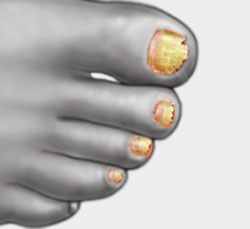- Home
- Foot & Ankle Conditions
- Toenails Conditions
- Toenail Fungus
Toenail Fungus: causes, symptoms and treatment
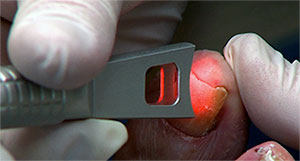
What's Toenail Fungus?
Fungal infections of the nail plate (also known as onychomycosis) are the most common nail disease.
Various types of fungi are present everywhere in the environment, and most are harmless until they penetrate the skin.
A fungus can invade through minor cuts or after injury. Repeated irritation to the toes may cause the nail to separate from the bed, making the toes vulnerable.
- What are the symptoms of toenail fungus?
- What causes toenail fungal infections?
- What are fungal toenail treatment options?
- How to prevent toenail fungus
- Other types of nail infections
- University Foot and Ankle Institute, the Best Choice for Onychomycosis Treatment
- Frequently Asked Questions about Toenail Fungus
- How effective is laser treatment compared to taking meds to kill the toenail fungus? And which helps prevent re-occurrences better?
- How effective are laser devices for nail fungus treatment?
- How effective are topical antifungal creams in the treatment of onychomycosis?
- How long does it take for the new nail to grow following a laser treatment session?
- Is laser treatment for toenail fungus covered by insurance?
- What's a mycotic nail?
-
Foot and Ankle Surgeon at University Foot and Ankle Institute
Dr. Justin Franson, DPM, is a Board Certified Podiatric Foot and Ankle Specialist and Diplomate of the American Board of Podiatric Surgery. He attended the School College of Podiatric Medicine in Chicago, graduating in 2001. Dr. Franson then accepted a three-year residency program at the Greater Los Angeles VA and UCLA County Hospital.
Dr. Franson specializes in several areas including total ankle replacement and sports medicine. Treating athletes and weekend warriors like himself brings him a lot of joy. Dr. Franson keeps active with running marathons, triathlons, hiking, basketball, and golf.
Learn More from our Toenail Fungus Blog Articles
- Couples Living Together Share a Lot of Things, Even the Bacteria on Their Feet
- Can a Blow Dryer Prevent Toenail Fungus?
- Paronychia: Treating and Avoiding Annoying Nail Infections
- What Causes a Black Toenail? Should You Be Worried?
- Treating Athlete’s Foot with Garlic? Prepare to Be Burned, Literally!
- What To Do When Your Toenail Is Falling Off
 The Feld-Man rocksMark L.
The Feld-Man rocksMark L. Great experience. Great communication. Great direction for my care. Very happy I chose to go with this particular doctor and o...Christopher R.
Great experience. Great communication. Great direction for my care. Very happy I chose to go with this particular doctor and o...Christopher R. Great service and care. Highly recommend Dr. Franson.David B.
Great service and care. Highly recommend Dr. Franson.David B. If you have to go see a Doctor than this is a great experience.Frank M.
If you have to go see a Doctor than this is a great experience.Frank M. My doctor was great. Really greatRudolph B.
My doctor was great. Really greatRudolph B. Good.David E.
Good.David E. Your Santa Barbara office and Dr. Johnson always give me excellent care!Jayne A.
Your Santa Barbara office and Dr. Johnson always give me excellent care!Jayne A. Dr. Gina Nalbadian was amazing!! I came in with an emergency foot situation and she had wonderful bedside manner and resolved m...Danielle C.
Dr. Gina Nalbadian was amazing!! I came in with an emergency foot situation and she had wonderful bedside manner and resolved m...Danielle C. Dr. Jafari and the staff have been wonderful. I’ve been a patient in the Valencia office for a year and a half now and Dr. Jaf...Debbie A.
Dr. Jafari and the staff have been wonderful. I’ve been a patient in the Valencia office for a year and a half now and Dr. Jaf...Debbie A. All I can say about this place is, you will see miracles with your own eyes. I went to their office in Sherman Oaks and I had a...Allen S.
All I can say about this place is, you will see miracles with your own eyes. I went to their office in Sherman Oaks and I had a...Allen S. I was frustrated that after 3 weeks I still hadn’t heard back about my PT referral status. And I did sit in a room for over 30 ...Sarah C.
I was frustrated that after 3 weeks I still hadn’t heard back about my PT referral status. And I did sit in a room for over 30 ...Sarah C. I’m very pleased with Dr. Kelman.Alan S.
I’m very pleased with Dr. Kelman.Alan S.
-
 Treating Athlete’s Foot with Garlic? Prepare to Be Burned, Literally!
Read More
Treating Athlete’s Foot with Garlic? Prepare to Be Burned, Literally!
Read More
-
 Listen Now
Couples Living Together Share a Lot of Things, Even the Bacteria on Their Feet
Read More
Listen Now
Couples Living Together Share a Lot of Things, Even the Bacteria on Their Feet
Read More
-
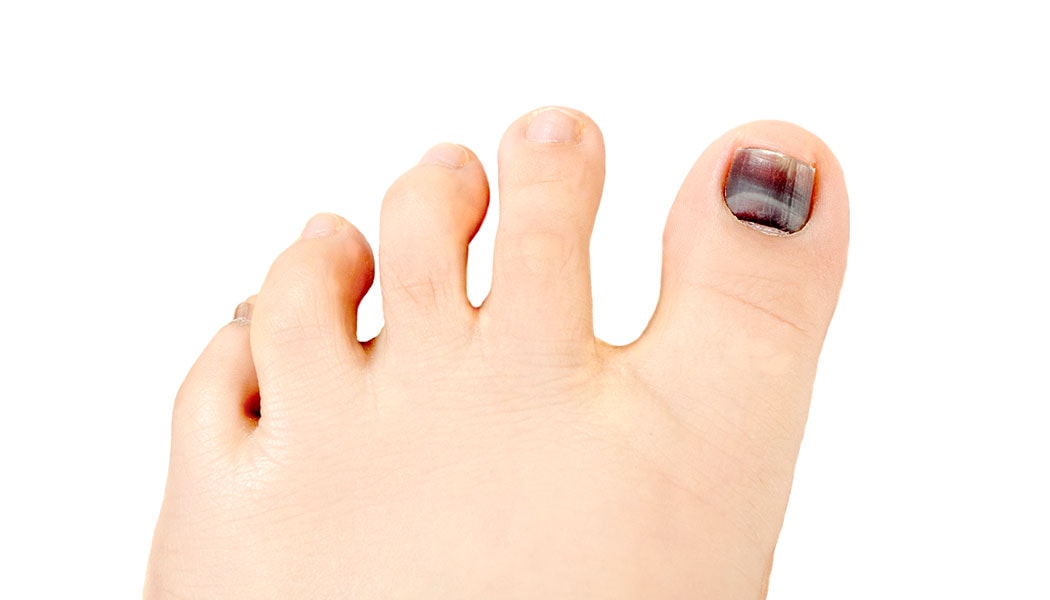 Listen Now
What Causes a Black Toenail? Should You Be Worried?
Read More
Listen Now
What Causes a Black Toenail? Should You Be Worried?
Read More
-
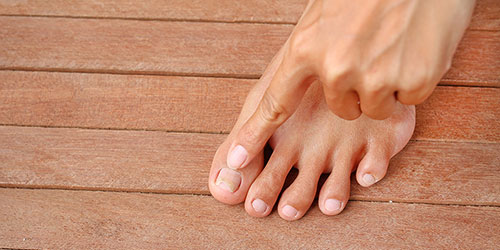 Listen Now
Paronychia: Treating and Avoiding Annoying Nail Infections
Read More
Listen Now
Paronychia: Treating and Avoiding Annoying Nail Infections
Read More
-
 Listen Now
Can a Blow Dryer Prevent Toenail Fungus?
Read More
Listen Now
Can a Blow Dryer Prevent Toenail Fungus?
Read More
-
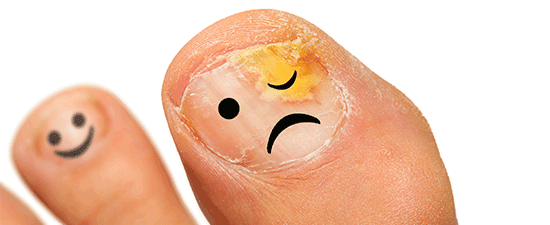 Listen Now
What To Do When Your Toenail Is Falling Off
Read More
Listen Now
What To Do When Your Toenail Is Falling Off
Read More
